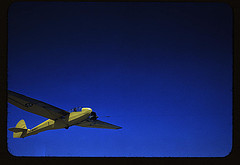The abstract for our Digital Humanities 2014 conference paper is below. Scott's posted his notes from the first part, my notes for the middle part How did 'play' shape the design and experience of creating Serendip-o-matic? are on Open Objects and Brian's are to follow.
Play as Process and Product: On Making Serendip-o-matic
Amy Papaelias, State University of New York at New Paltz
Brian Croxall, Emory University
Mia Ridge, The Open University
Scott Kleinman, California State University, Northridge
Summary
Who says scholarship can't be playful? Serendip-o-matic is a "serendipity engine" that was created in less than a week by twelve digital humanities scholars, developers, and librarians. Designed to replicate the surprising experience of discovering an unexpected source while browsing library stacks or working in an archive, the visual and algorithmic design of Serendip-o-matic emphasizes playfulness. And since the tool was built by a group of people who were embarking on a difficult task but weren't yet sure of one another's names, the process of building Serendip-o-matic was also rather playful, encouraging participants to take risks, make mistakes, and learn something new. In this presentation, we report on how play shaped the creation, design, and marketing of Serendip-o-matic. We conclude by arguing for the benefits of more playful work in academic research and scholarship, as well as considering how such "play" can be evaluated in an academic context.
Continue reading "Conference paper: Play as Process and Product: On Making Serendip-o-matic"

